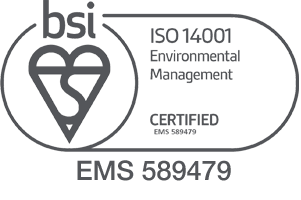


28/05/2024
How can you safeguard patient critical possessions during a hospital evacuation?
Hospital evacuations have the potential to be extremely chaotic, with a real risk of critical possessions being waylaid in the effort to evacuate patients to safety. While all personal belongings should be treated with care and consideration during an evacuation, ‘critical possessions’ are those that are essential to the well-being and health of the patient, and must be immediately accessible to ensure continuity of care.
These critical items can include:
- Medications for chronic conditions (e.g. insulin, blood pressure medication, etc)
- Hearing aids
- False teeth/dentures
- Glasses
Why it is important to safeguard critical possessions in hospital
The loss or damage of any critical possessions items could have severe health implications for the patient. Missing medications, for example, could put a patient at risk of worsening health or even death.
Recognising that some patients, staff, and visitors may have serious or life-threatening conditions and must be moved to a place of safety, a hospital evacuation plan provides a structured framework for protecting critical possessions, with clear roles and responsibilities, and pre planned procedures for staff and emergency services personnel to follow.
Personal belongings and critical possessions
Critical possessions are normally given greater priority during a hospital evacuation due to the greater implications of their loss or damage. However, the loss of some ‘personal belongings’ during a hospital evacuation can also be emotionally distressing for patients, potentially impacting their mental state and hindering their recovery. This is especially true for vulnerable adults, patients suffering from anxiety and other mental health conditions, children, and patients who are critically ill or undergoing palliative care.
These possessions can be extremely personal, and can include a child’s teddy bear or blanket, a person’s wedding ring, their handbag, purse, wallet, or personal photographs.
Research conducted by the American Society for Healthcare Risk Management concluded that “the loss of essential items has been identified as a factor in worsening confusion, disorientation and nutritional status, which could lead to safety events such as falls.” Ensuring that proper procedures are in place to safeguard critical and important patient property during an evacuation can help to alleviate stress and support patients’ recovery.
How SmartSafe™ can protect your patients’ critical possessions
During a hospital evacuation, there will often be no time for patients or staff to collect their critical possessions. Therefore, hospitals benefit from a simple and cost-effective solution, such as SmartSafe™, that keeps critical items secure and traceable, eliminating the risk of loss or theft.
Features of SmartSafe™ patient possessions bags:
- Available in two different sizes – large for items like mobility aids, orthotics, footwear, and clothing, and small for medications, phones, wallets, watches, medical devices, documentation etc.
- Made from clear and durable polythene.
- Tamper-resistant seal.
- Unique barcode for identification.
SmartSafe™ utilises unique barcoded patient property bags to securely store each patient's critical possessions, and is designed to be fast and easy to use, with minimal prior training.
When an item is to be removed as part of a hospital evacuation, you simply select the appropriate sized bag, insert the items into the SmartSafe™ bag, and record the contents in the space provided. Once all the critical items have been contained, peel off the foil and seal the bag, removing the wristband from the top of the bag and securing it around the patient’s wrist, using the adhesive square provided.
The wristband allows the possessions to be accurately tracked in real time and reunited with their owner following the evacuation, preventing mix ups.
Additional information or documentation – e.g. medical records or identification documents – can be stored in the outside pocket of the SmartSafe™.
Accountability and reassurance
Carrying out this procedure in front of the patient will give them greater confidence that their critical and personal possessions are being handled correctly and ethically during the evacuation. Having their critical items safely accounted for provides much-needed reassurance during stressful hospital evacuations, allowing staff to focus on patient safety and medical needs and avoiding any interruption in medical care.
The SmartSafe™ system also gives hospital and emergency staff greater visibility and accountability over how patient critical possessions are handled during the evacuation, and managed at the evacuation destination.
This brings various advantages to medical stakeholders, such as:
- Improved and more consistent delivery of patient care
- Protection for staff against false or fraudulent claims (e.g. of theft or loss)
- Upholds the reputation of your hospital or organisation
- Minimises the risk of lost property claims and legal costs
By integrating SmartSafe™ patient property tracking into your hospital evacuation plans, healthcare providers can prevent one of the most common causes of delays and disruption: securing and managing patient medications and critical possessions. SmartSafe™ helps streamline and simplify evacuations while avoiding disruptions in medical treatment.
Assess the quality of your hospital evacuation plan
At TSG Associates, our experts can help you assess and review your hospital evacuation plan, ensuring that every little detail – including the safety of patients’ critical possessions – is considered.
To find out more, simply book a free consultation today.
Image Source: Unsplash










